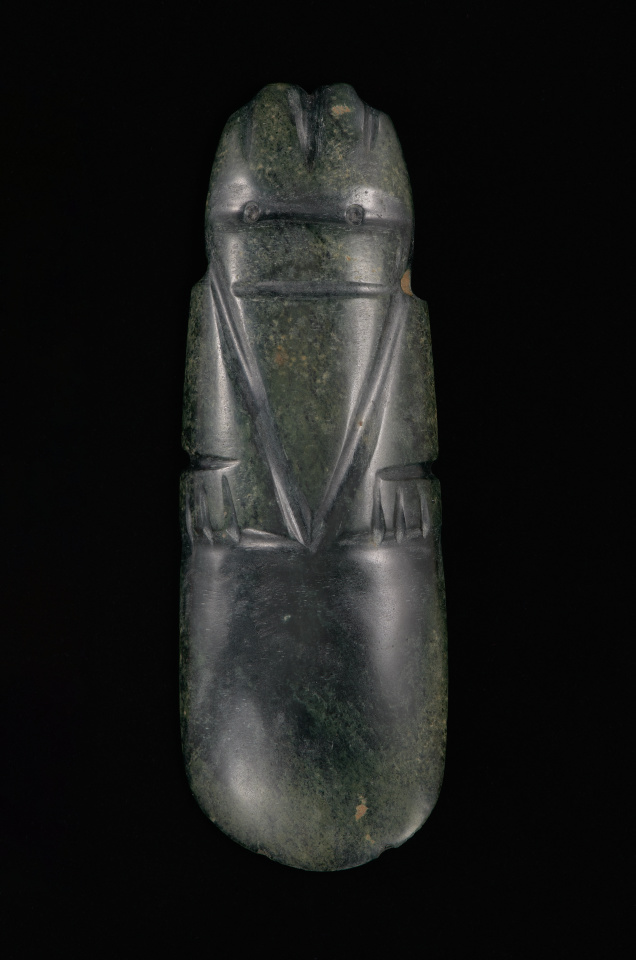Axe God (work of art)
Artwork Info
Key Ideas
- This pendant is six inches long and could have been worn on a cord as a necklace. It is carved from the mineral jadeite and has a smooth texture. The markings on it suggest a simplified human face.
- Jadeite, one of two minerals that make up the gemstone known as jade, indicated high status among individuals of precontact Costa Rica. The term precontact refers to the period before the indigenous people of a culture had any contact with an outside culture. The people of this culture considered jadeite to be the most precious mineral.
- Typically these pendants are humanlike figures with birdlike features. They are combined with the shape of an axe, an important tool in ancient American culture.
- Jadeite pendants such as this one have been found placed as offerings in burial tombs. In some instances the pendants were discovered on the neck of the deceased.
Learn More
Jadeite and similar greenstones were used in a wide variety of items that were worn as emblems of social and political power. One of the most common forms was the axe god pendant, which was suspended from a cord worn like a necklace. The name axe god comes from the form of the pendant, which is the same shape as the traditional stone chopping tool, or axe. Axes, also known as celts in Mesoamerica, were important tools to the people of ancient Mesoamerica. The curved bottom of the pendant is the part that represents the shape of the axe.
tags: fashion, function, power
Additional Resources
Resources for Teachers
- View another axe god pendant from the Vilcek Foundation.
- See examples of jade found in Costa Rica, from the Metropolitan Museum of Art.
Resources for Students
- Examine a jadeite bird pendant from Costa Rica.
- Learn more about rocks and minerals.
- Read an article about the modern country of Costa Rica.



